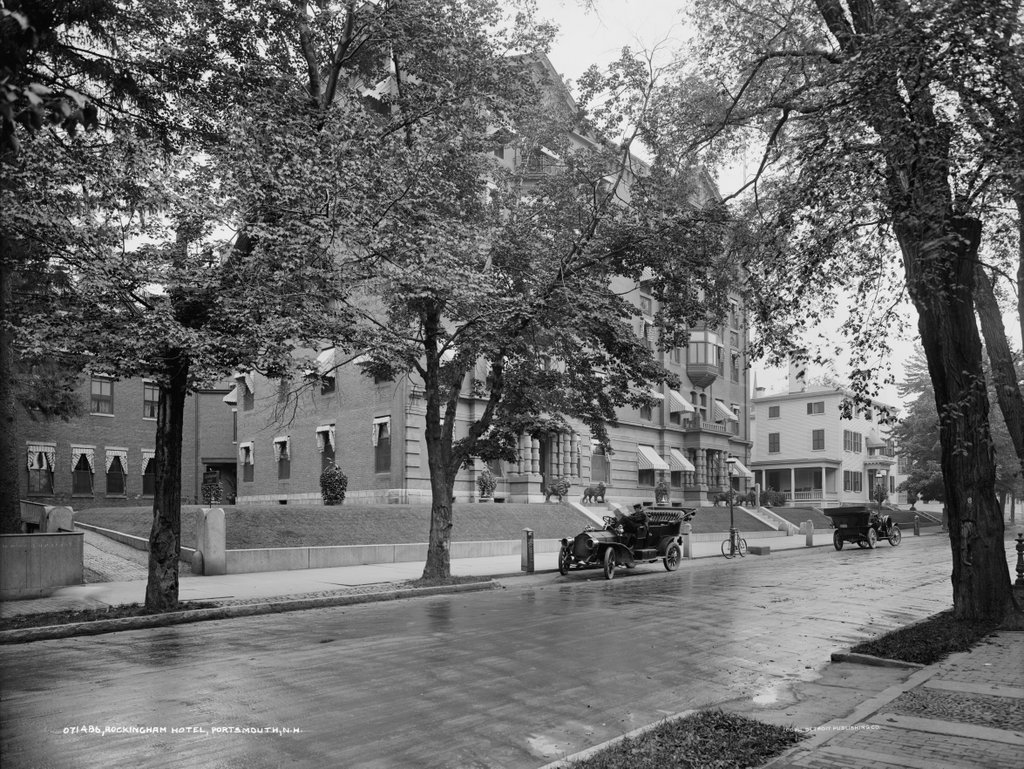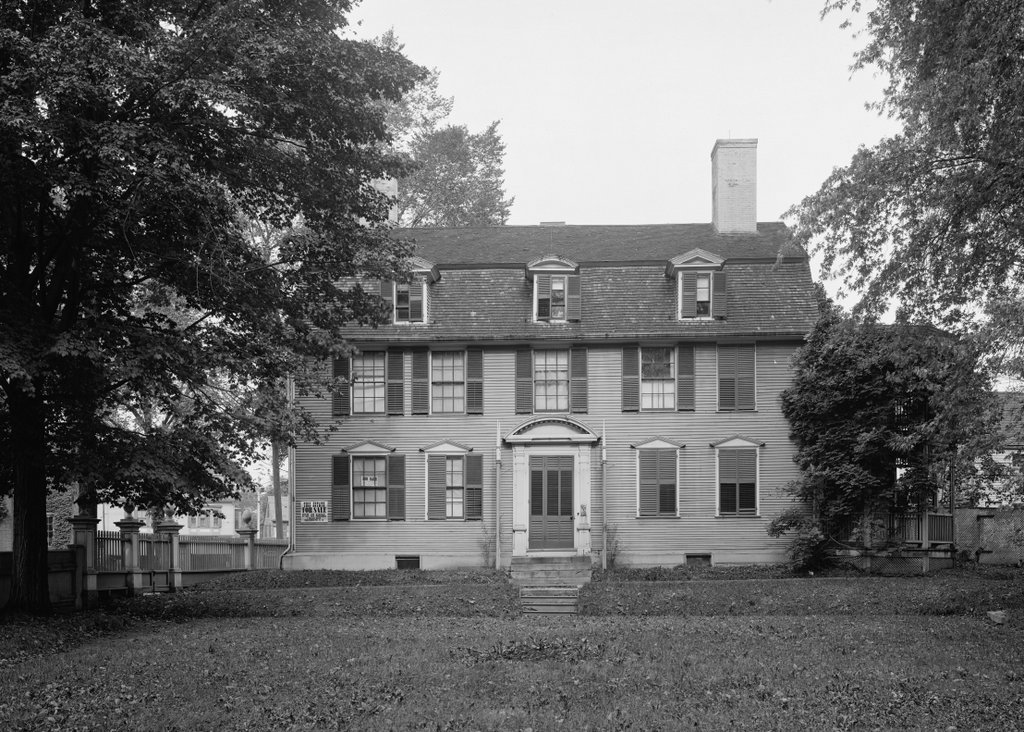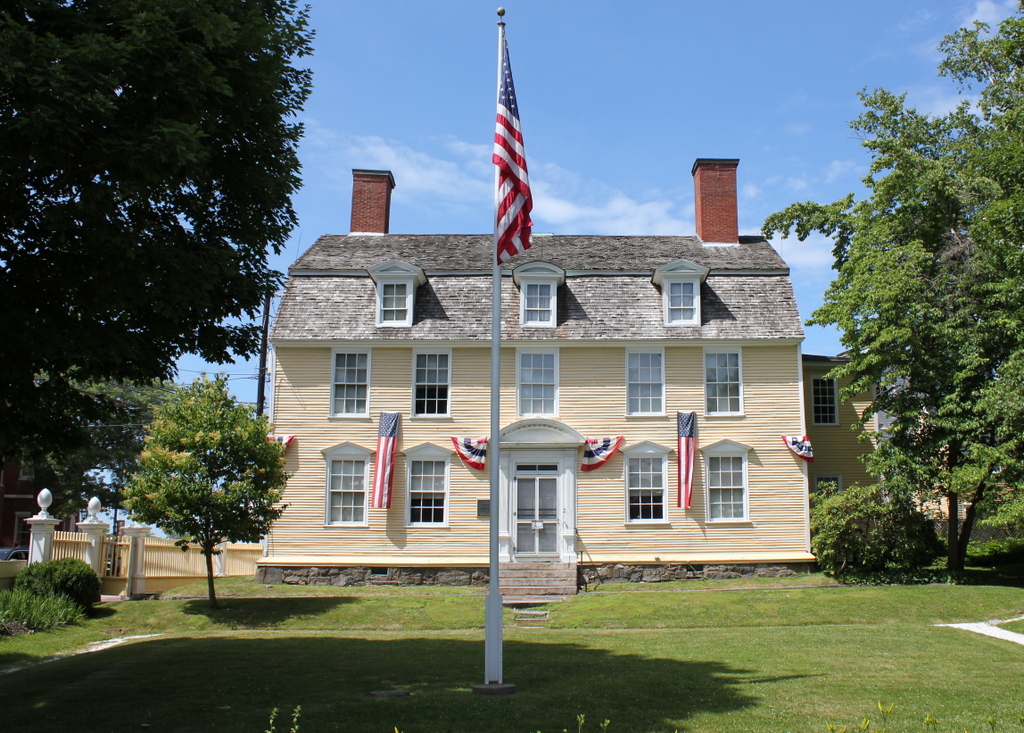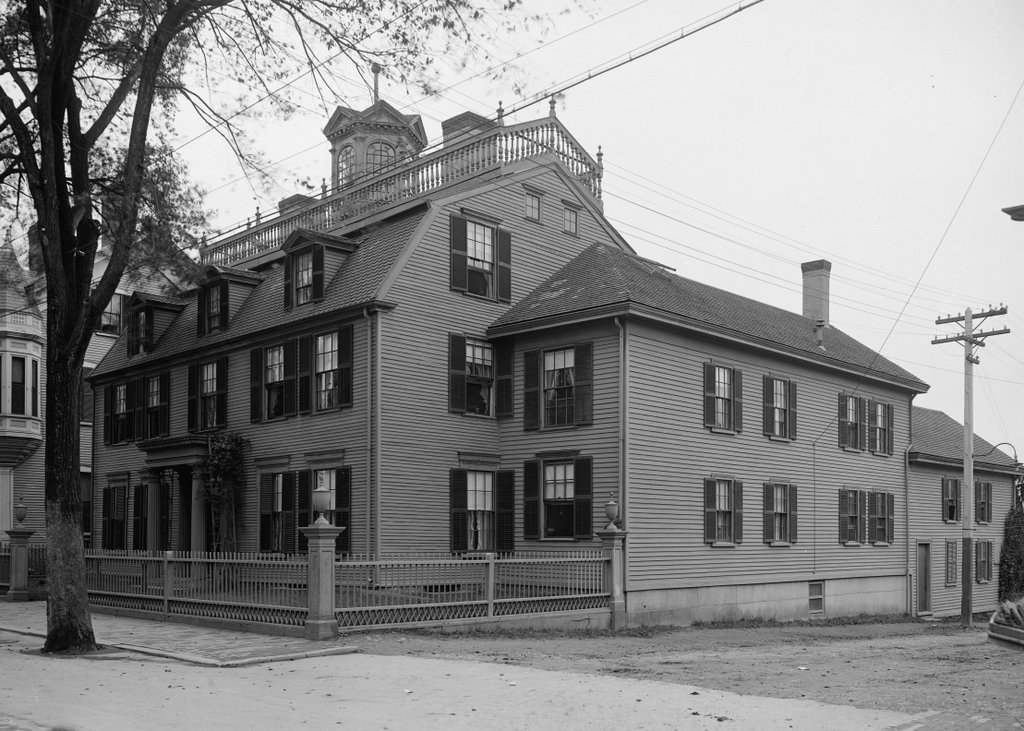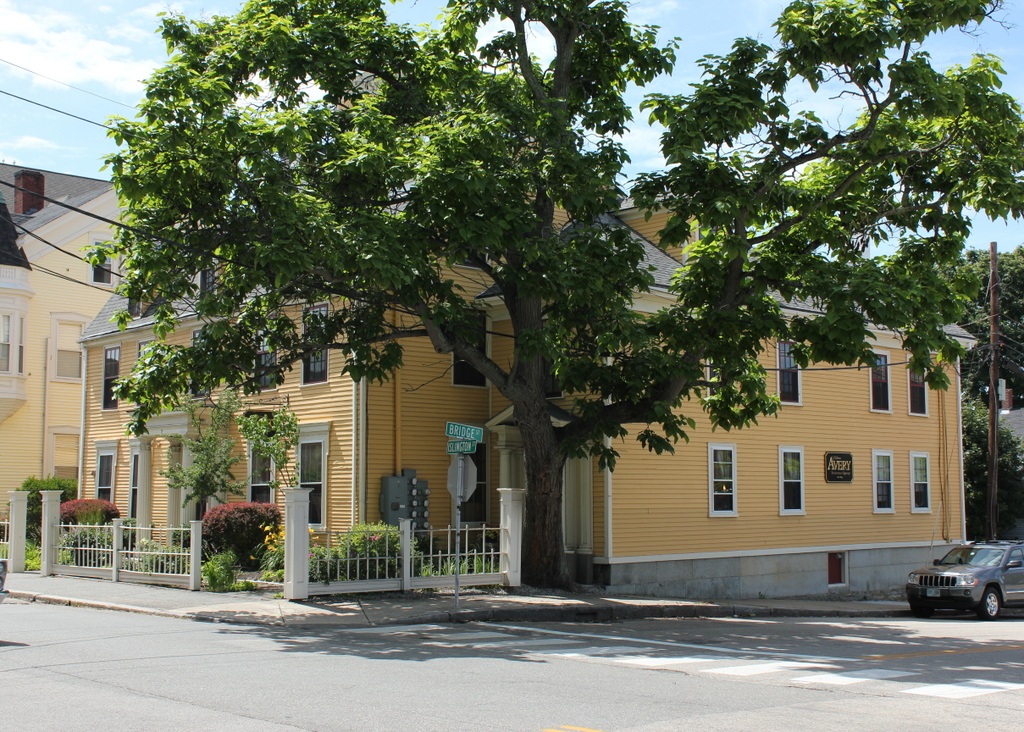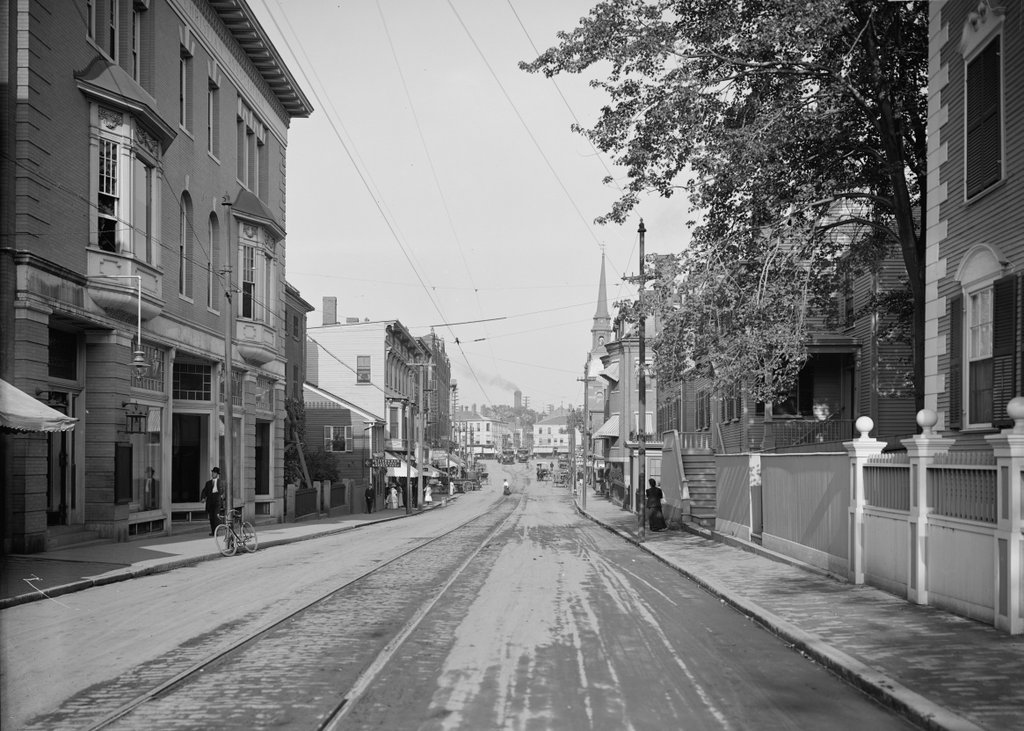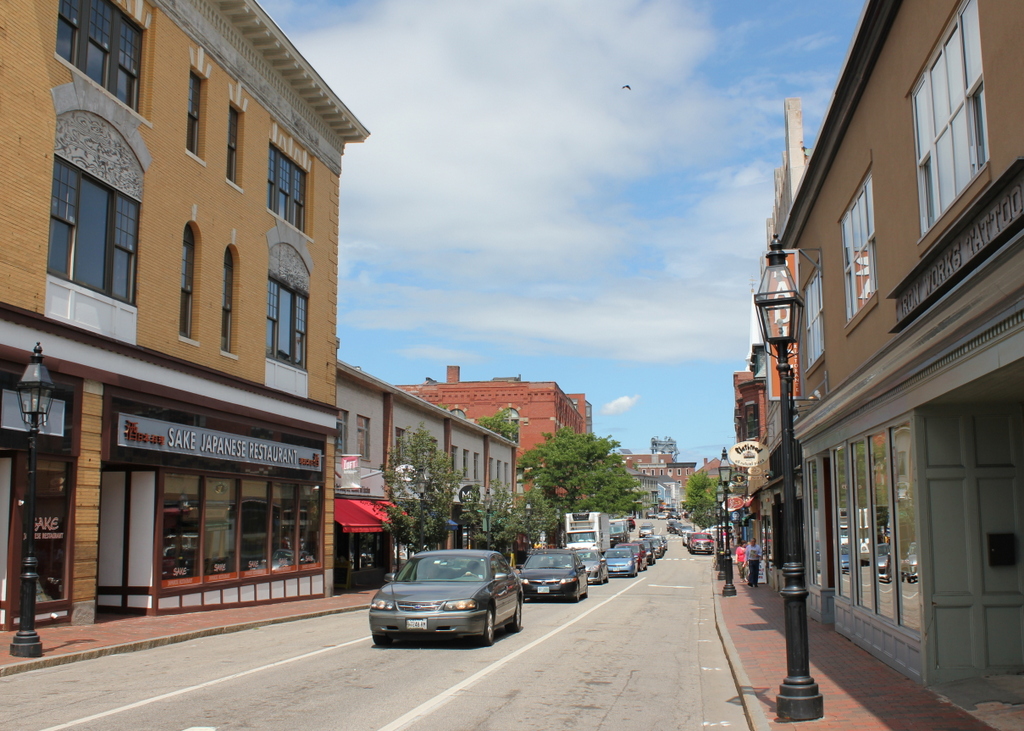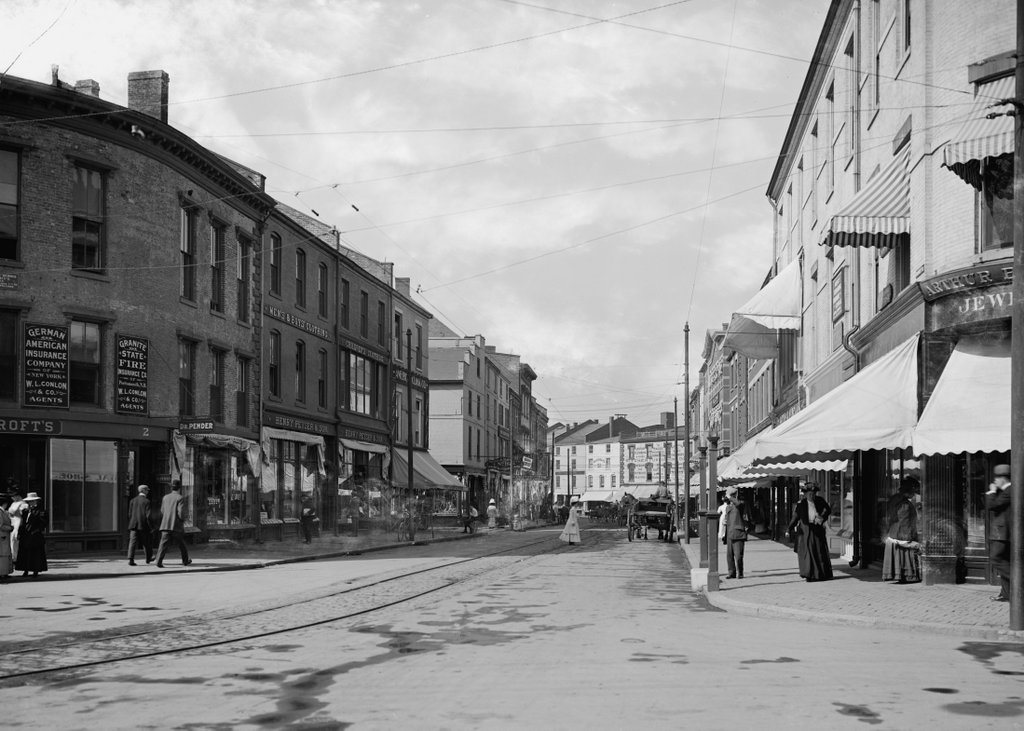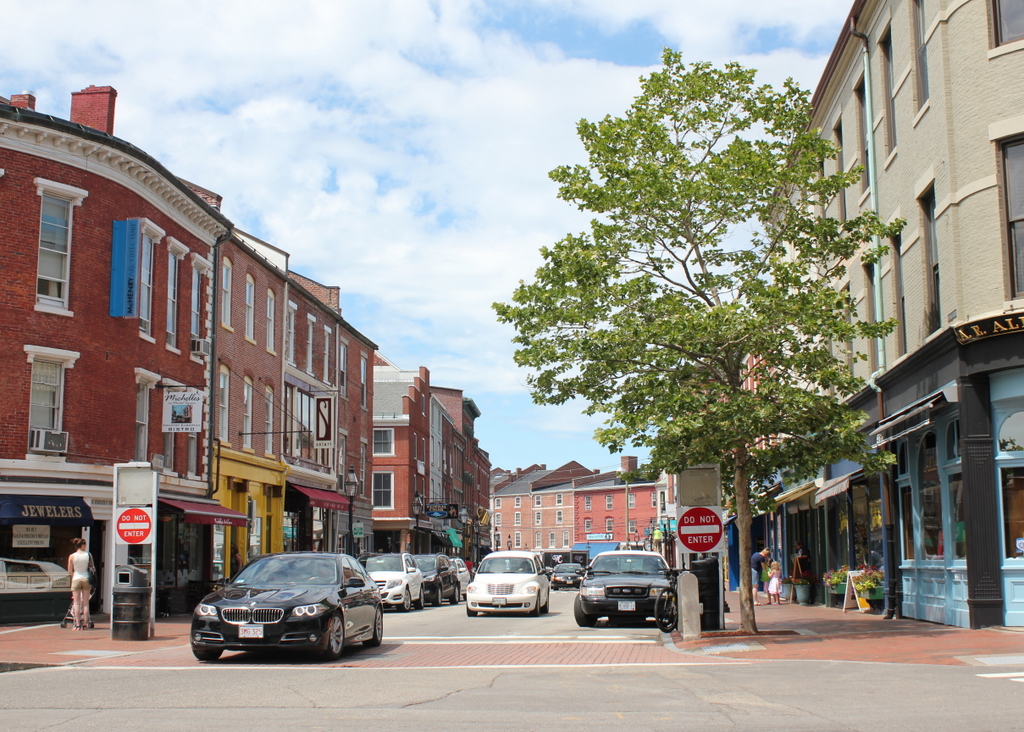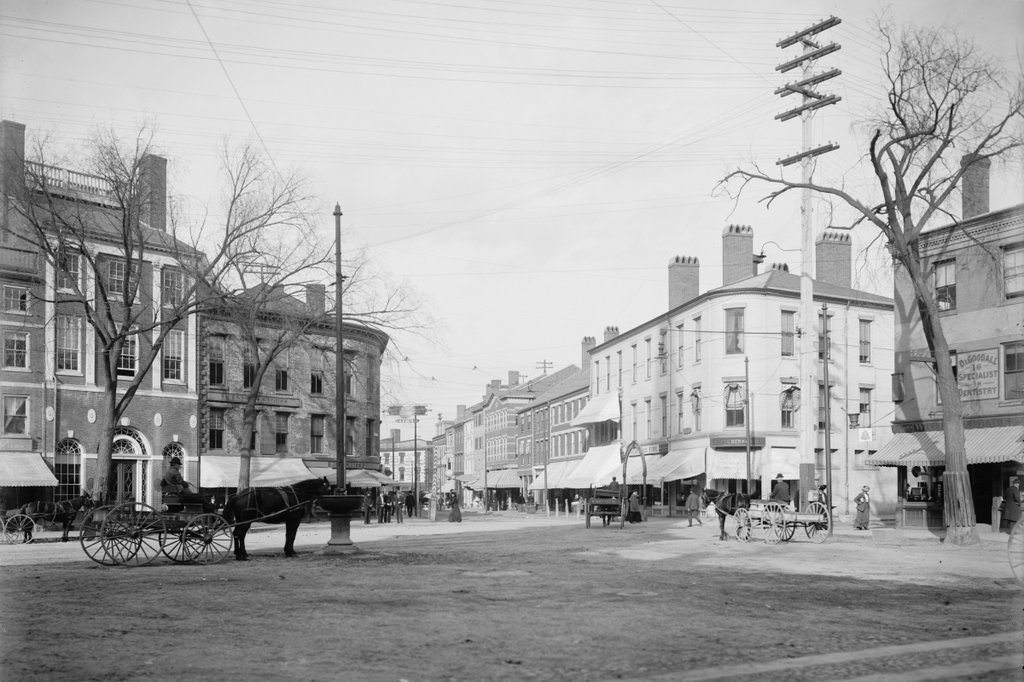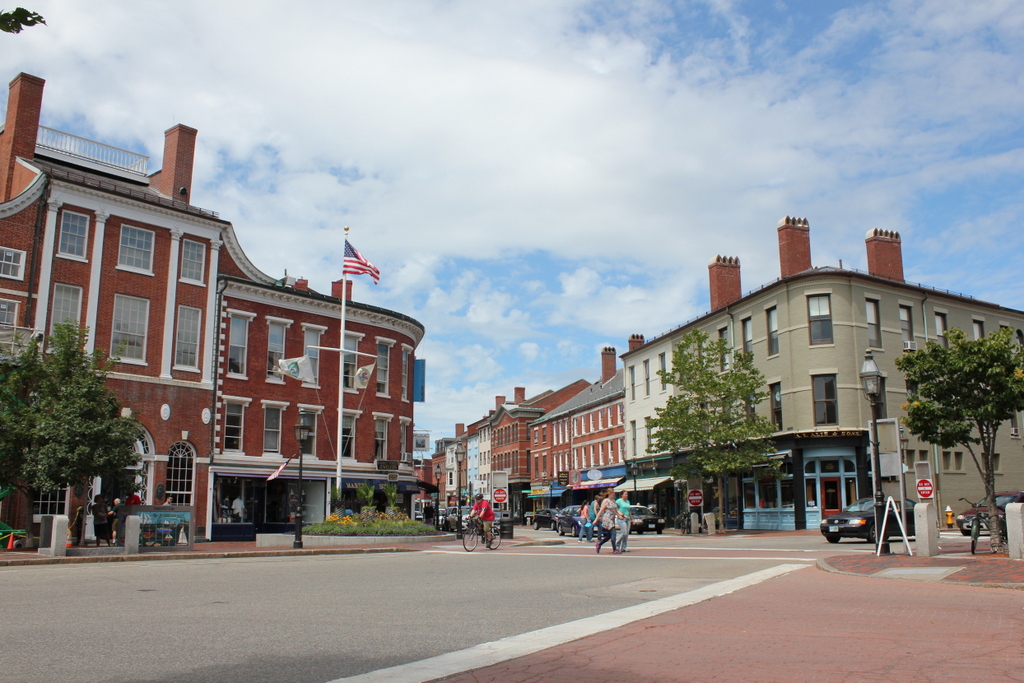The Rockingham Hotel on State Street in Portsmouth, around 1900-1910. Image courtesy of the Library of Congress, Detroit Publishing Company Collection.
The building in 2015:
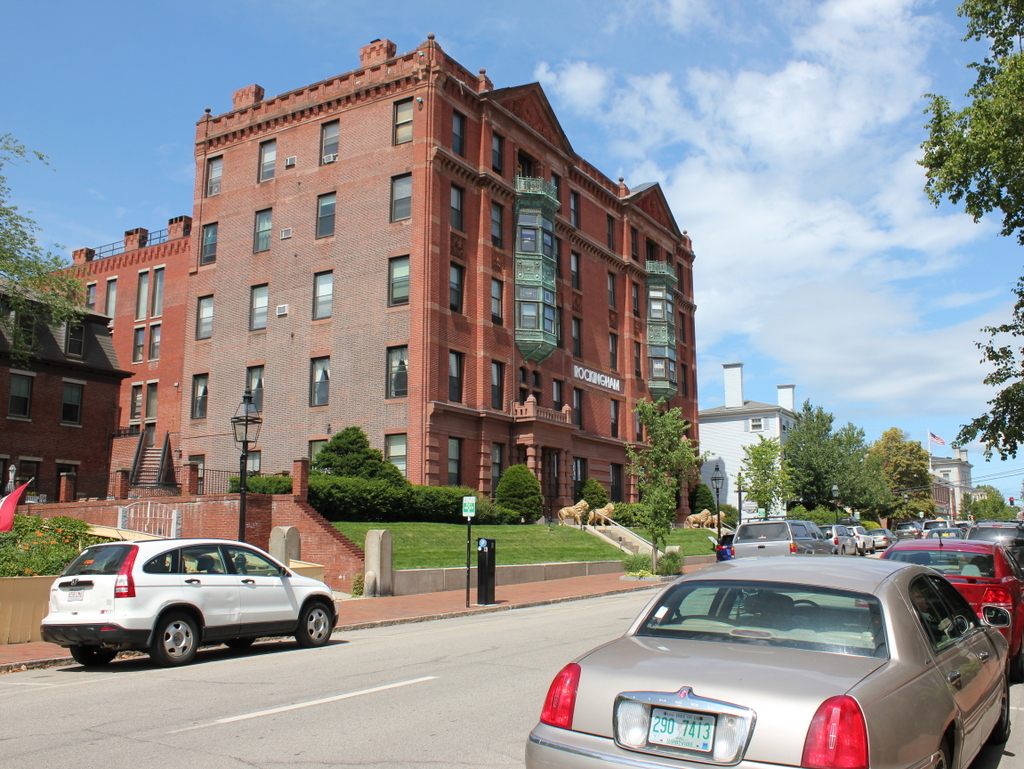
The original Rockingham Hotel was built in 1785 as the home of Woodbury Langdon, a wealthy merchant who served as a delegate to the Continental Congress and as a justice on the New Hampshire Supreme Court. He was also the brother of John Langdon, a signer of the Constitution who later served in the Senate and as Governor of New Hampshire. Woodbury Langdon died in 1805, and in 1833 his house was converted into a hotel and subsequently renovated and enlarged in 1870, after being purchased by former Portsmouth mayor and future Congressman Frank Jones. The photo below, from Portsmouth, Historic and Picturesque (1902), shows the building as it appeared in the 19th century. I don’t know whether it was taken before or after the 1870 expansion.
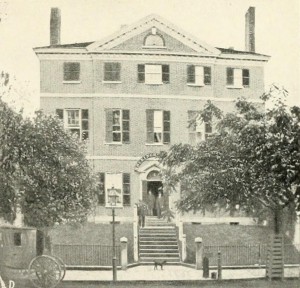
The old building was mostly destroyed in a fire in 1884, leaving only the dining room from the original house. It was rebuilt, preserving the original dining room, and reopened in 1886. The new building incorporated some of the same design elements from the original, just on a much larger scale, including the triangular pediments above the top floor. The hotel would go on to be one of the most popular in the area, and while many of its contemporaries succumbed to fire or redevelopment long ago, the building still stands today. It was converted to condominiums in the 1970s, and the historic dining room is now a steakhouse, The Library Restaurant.

